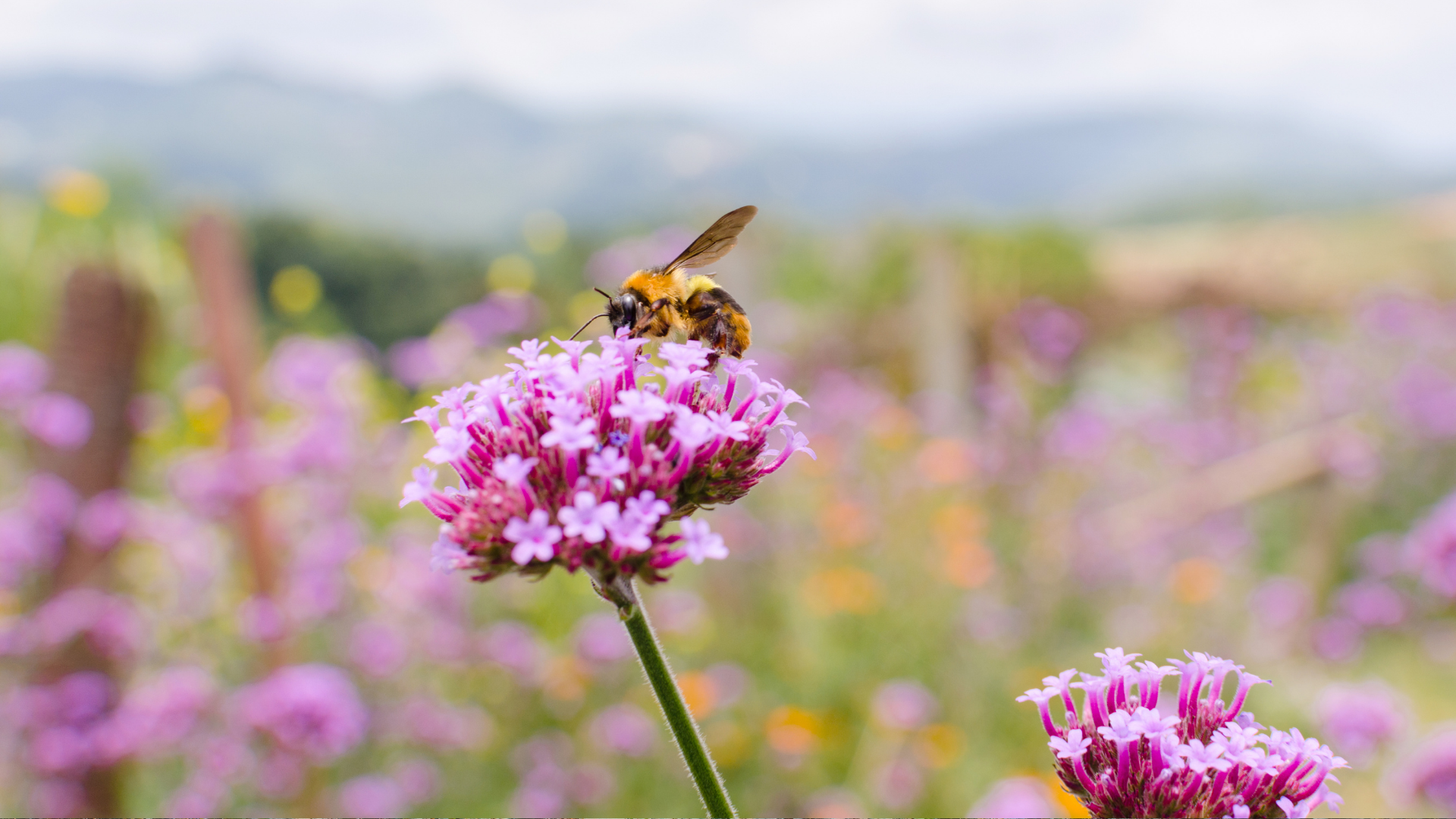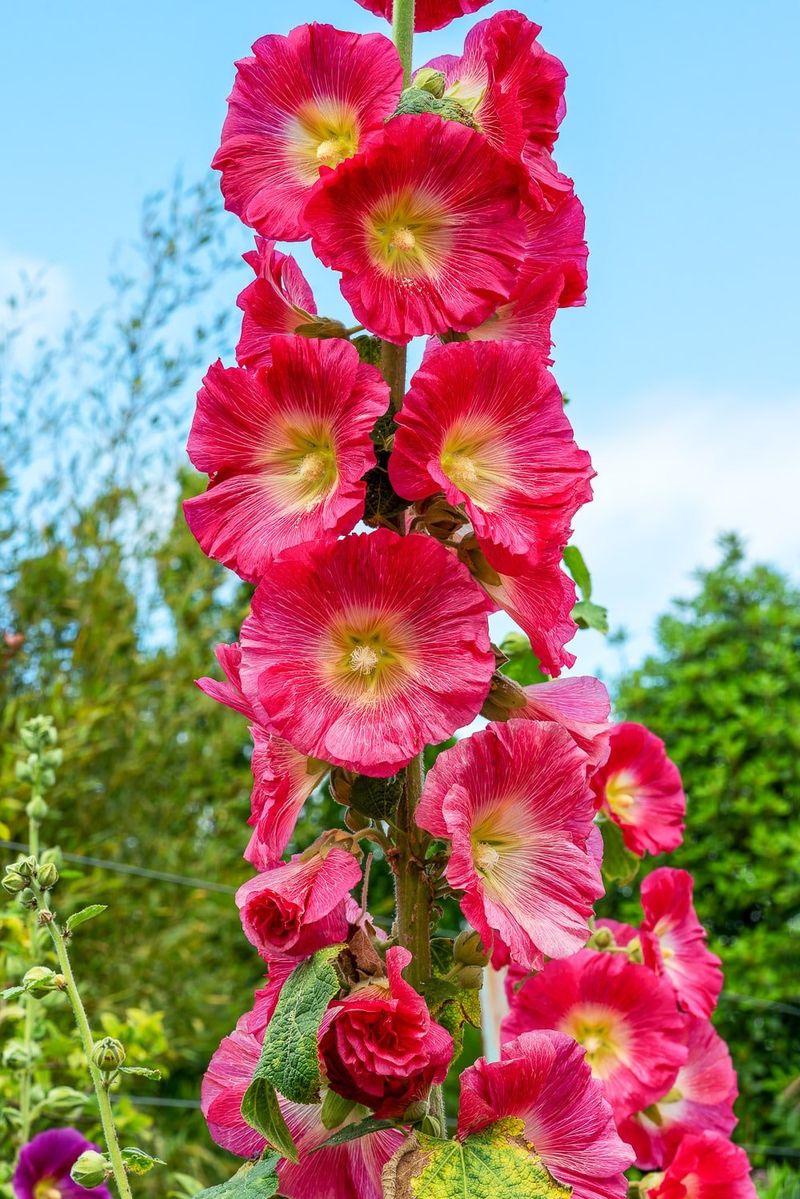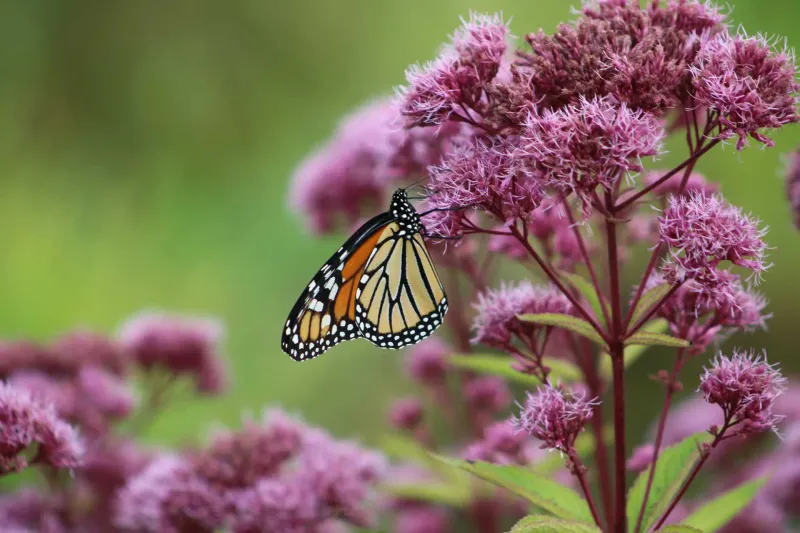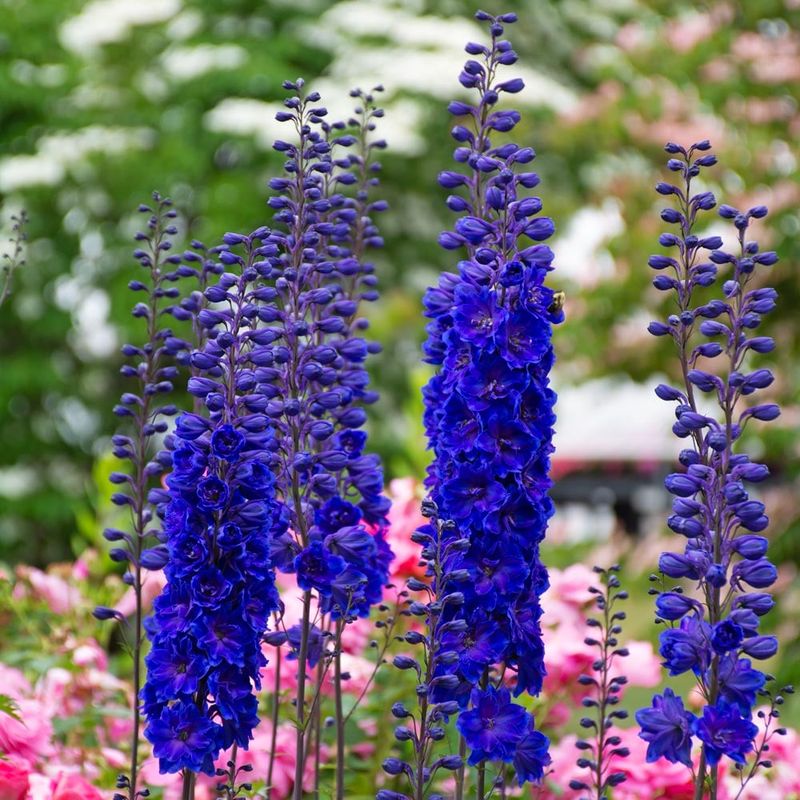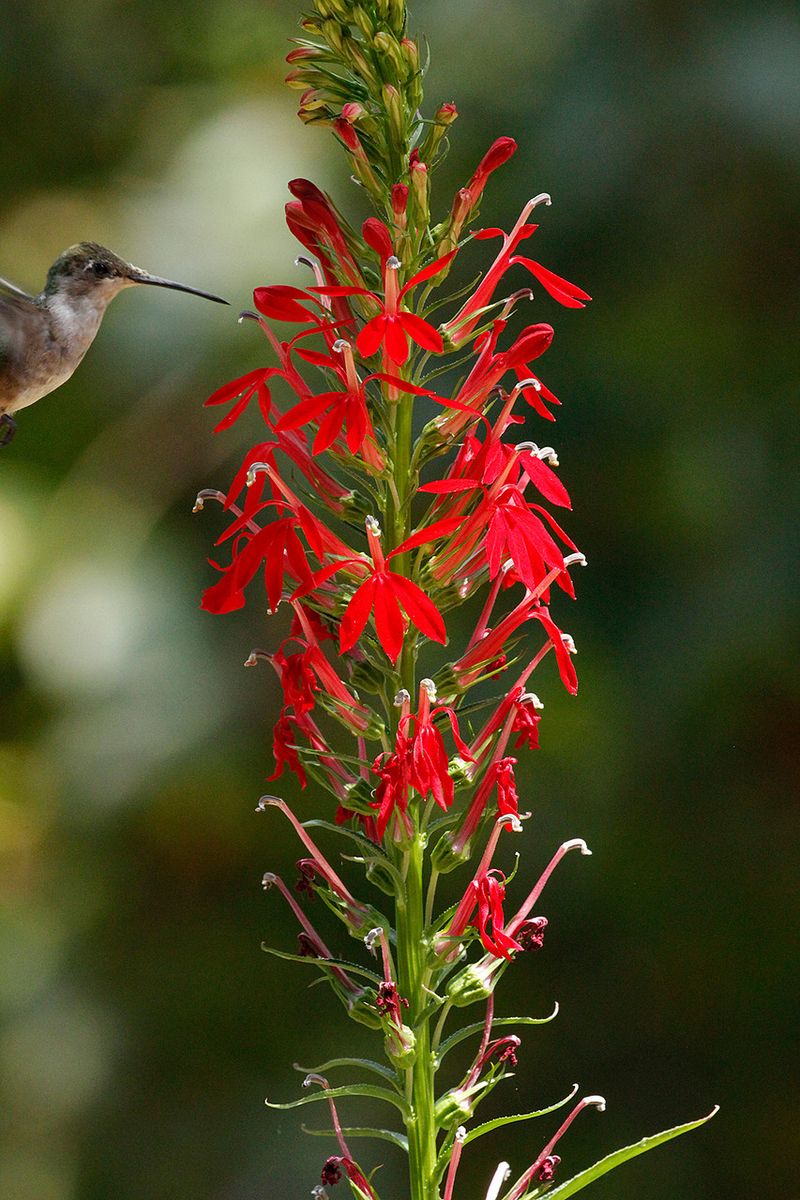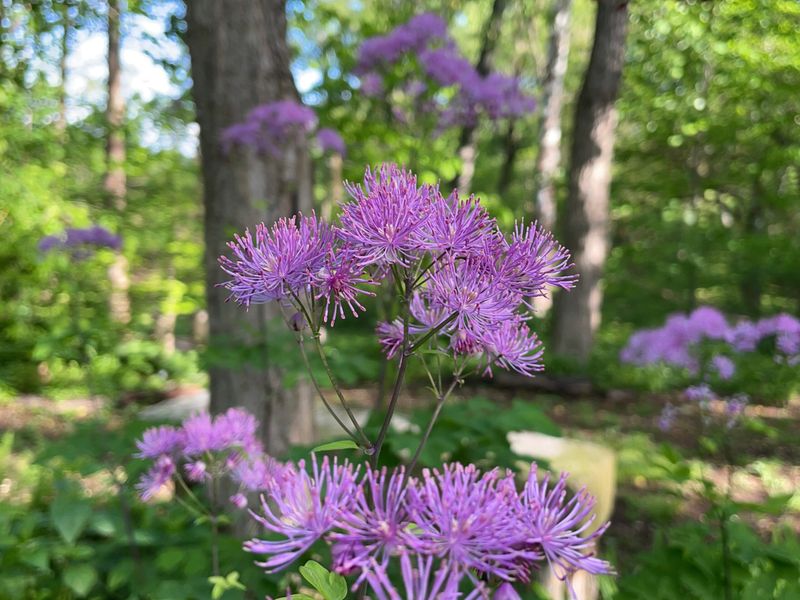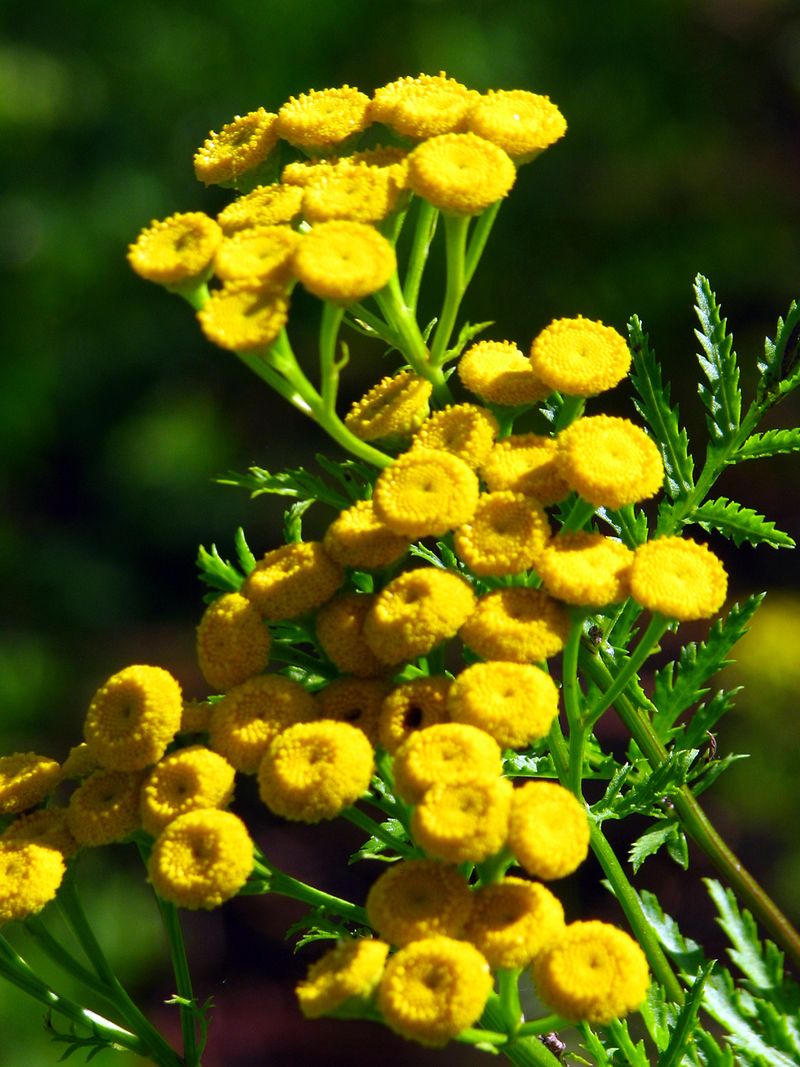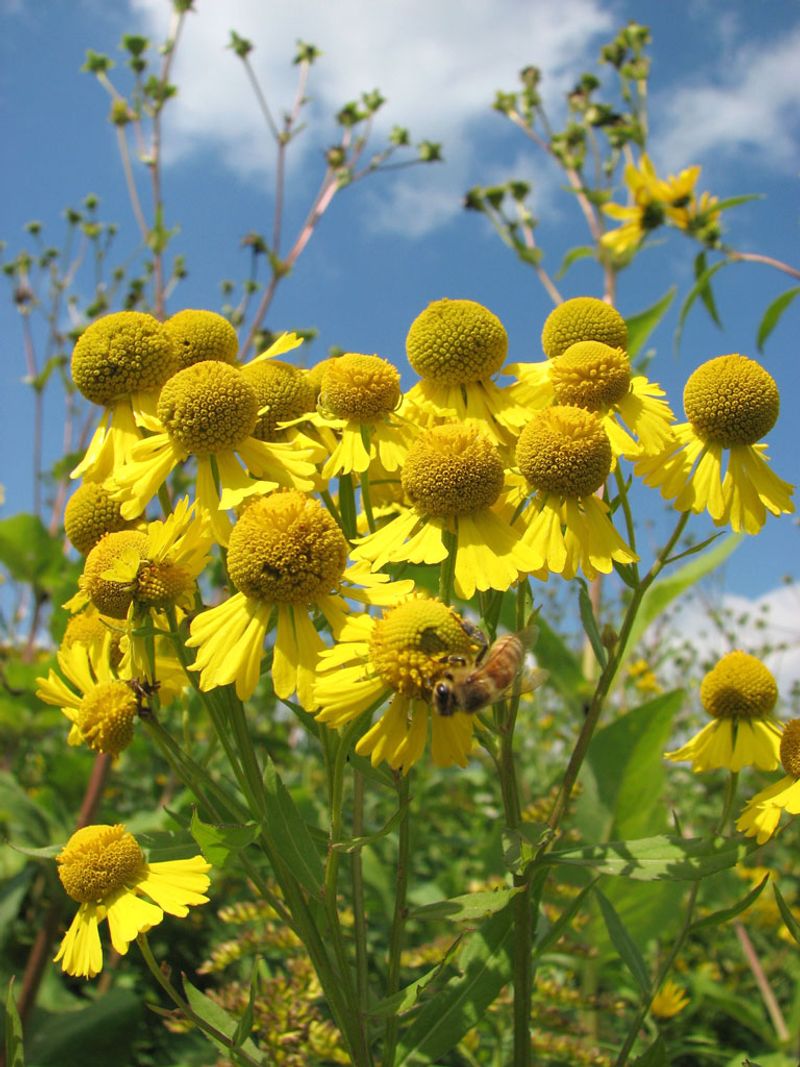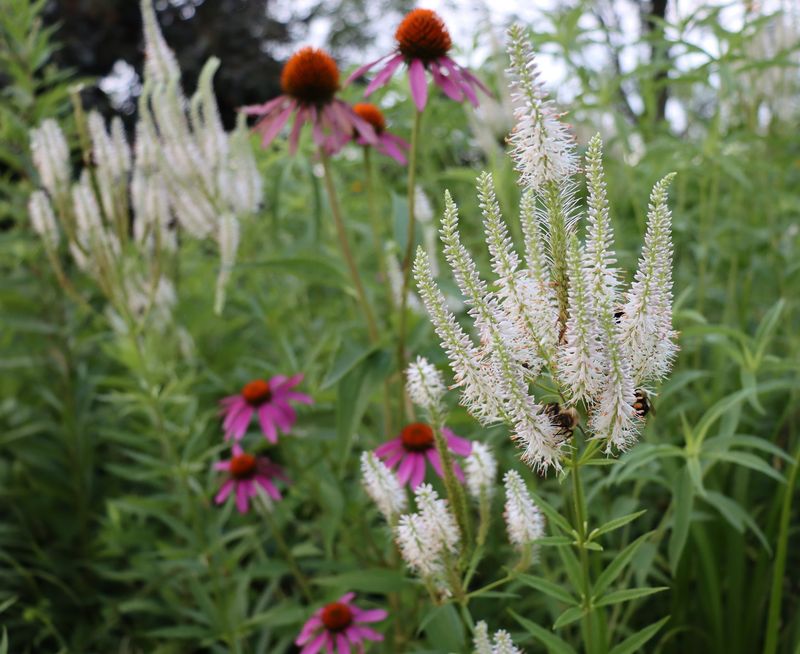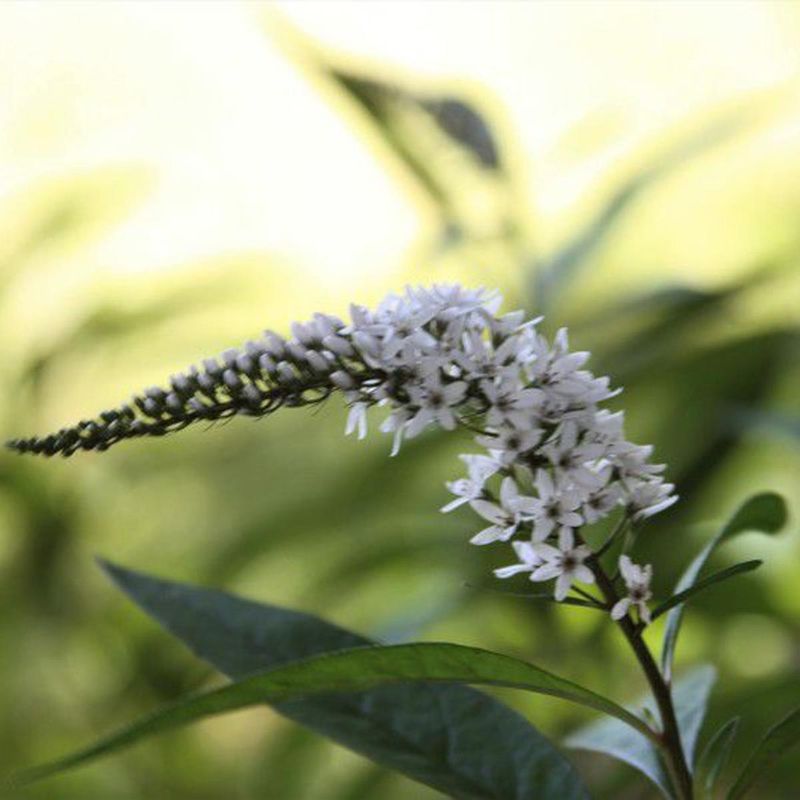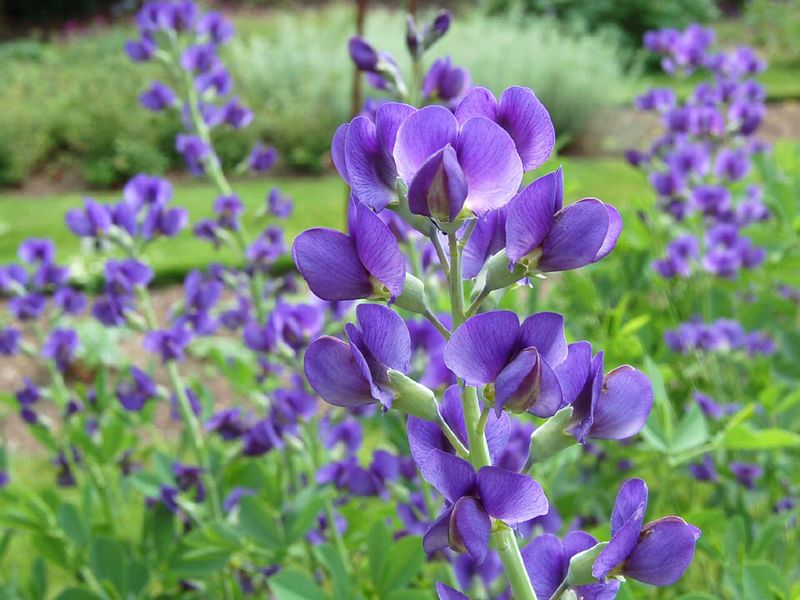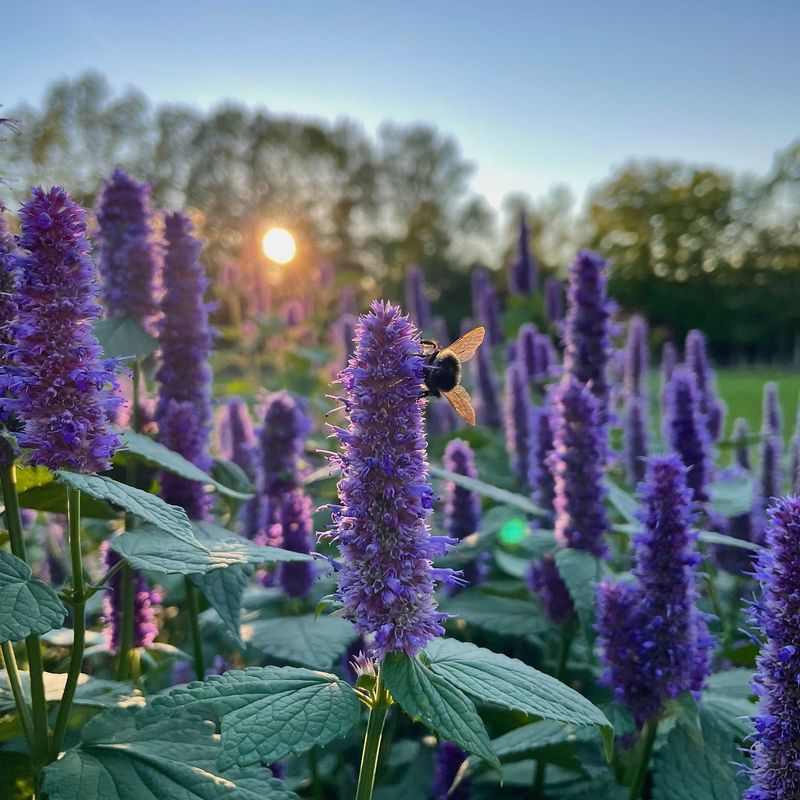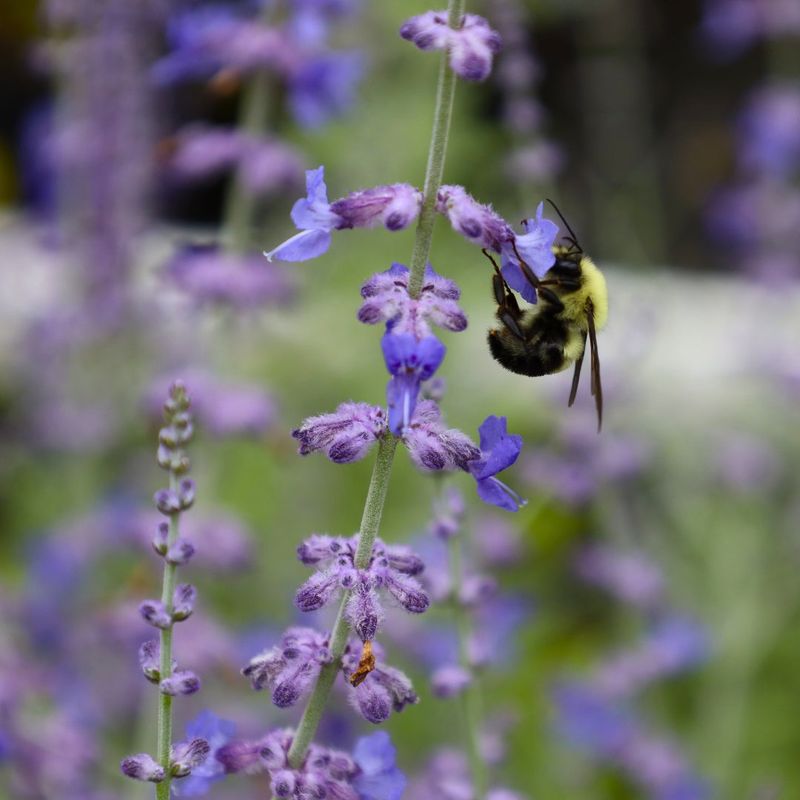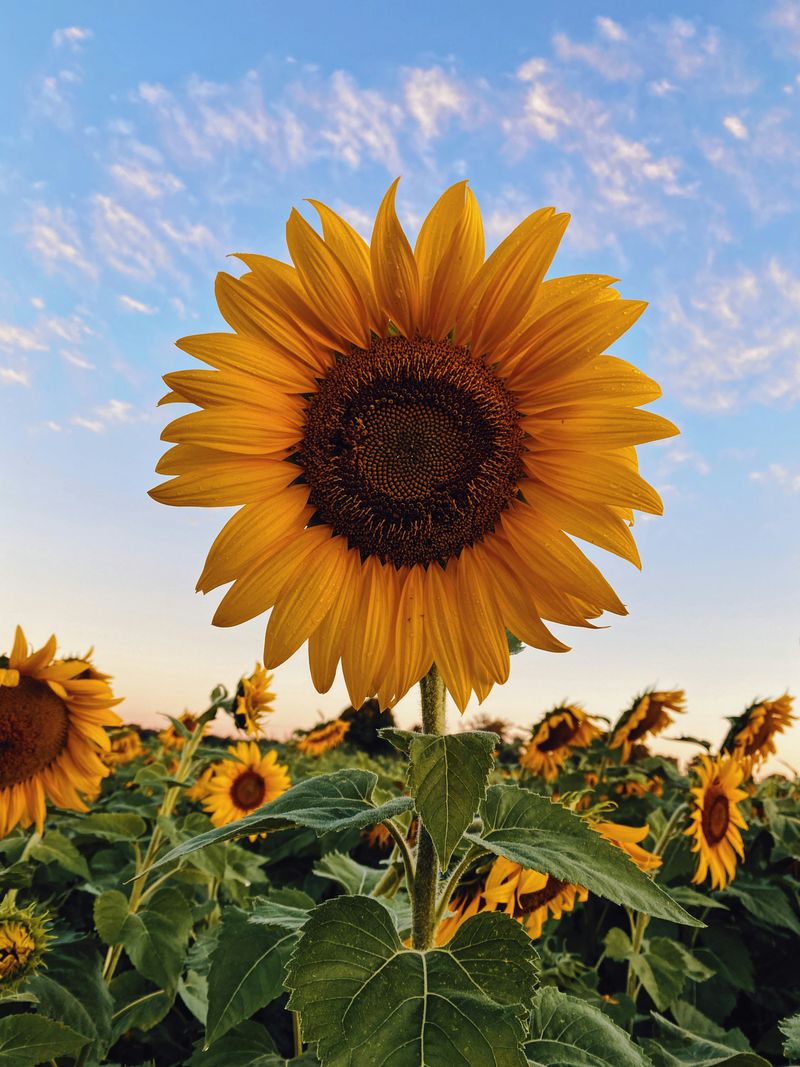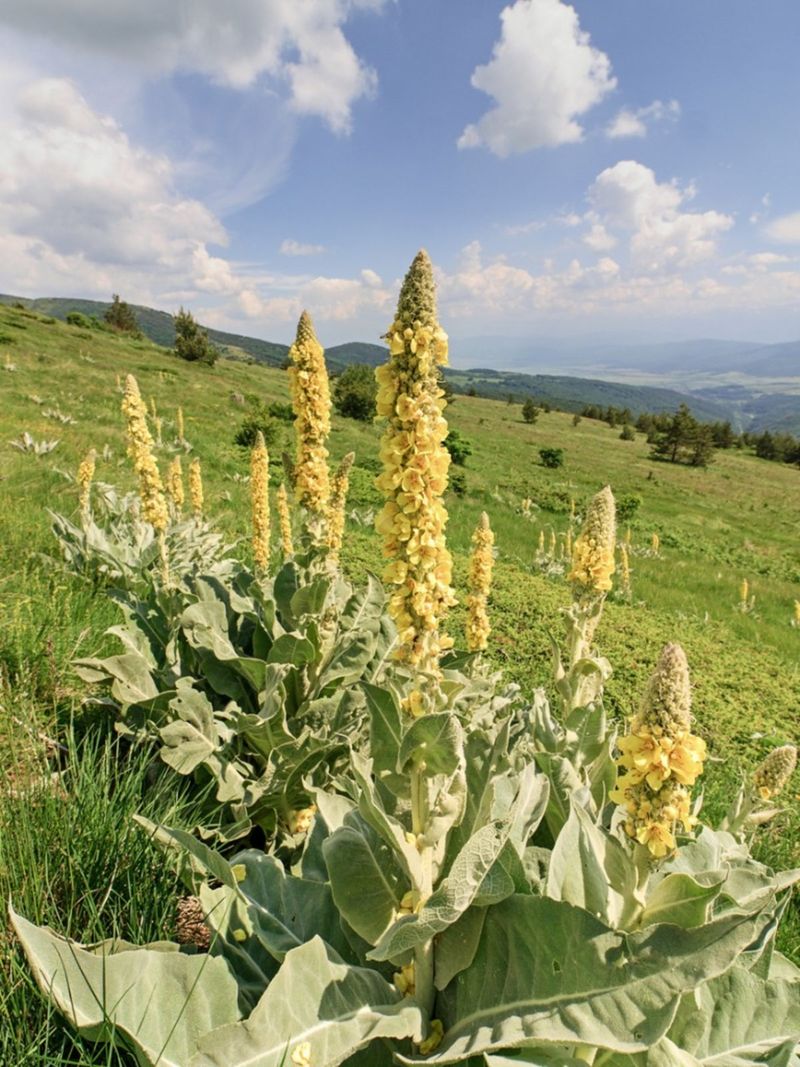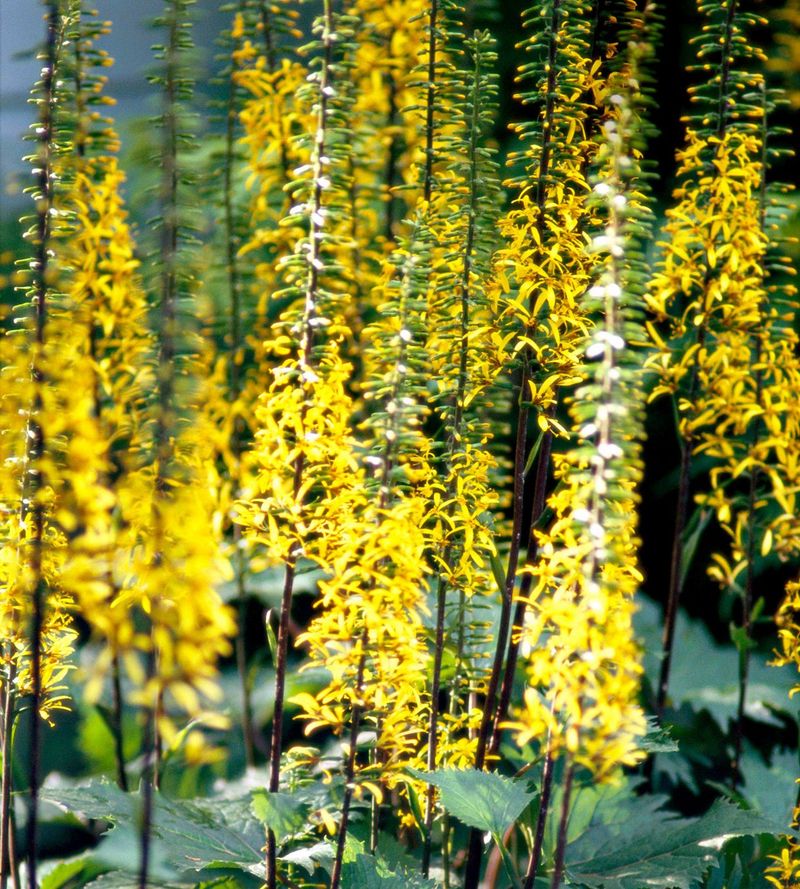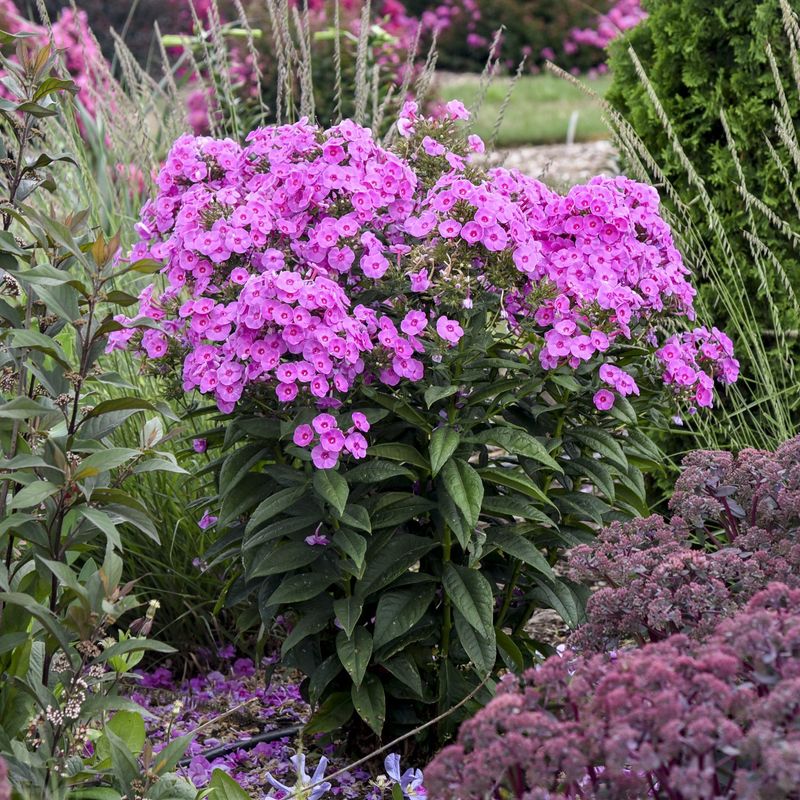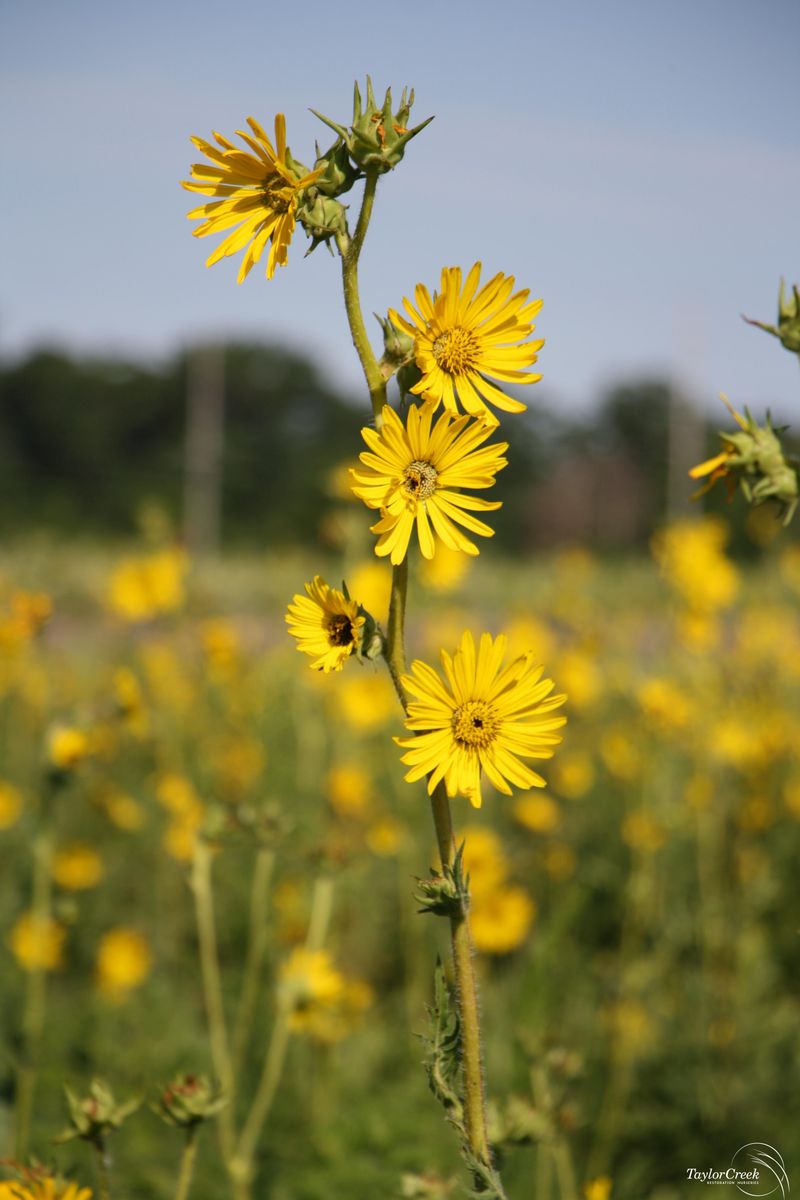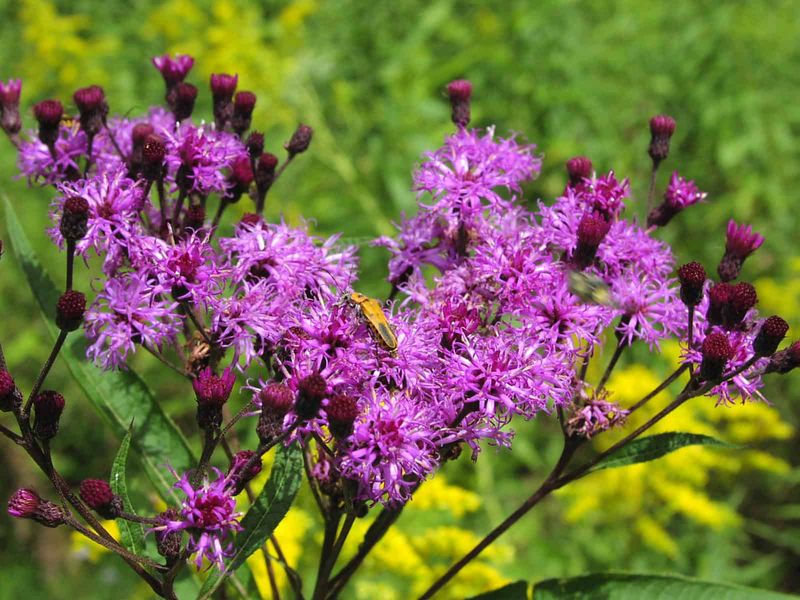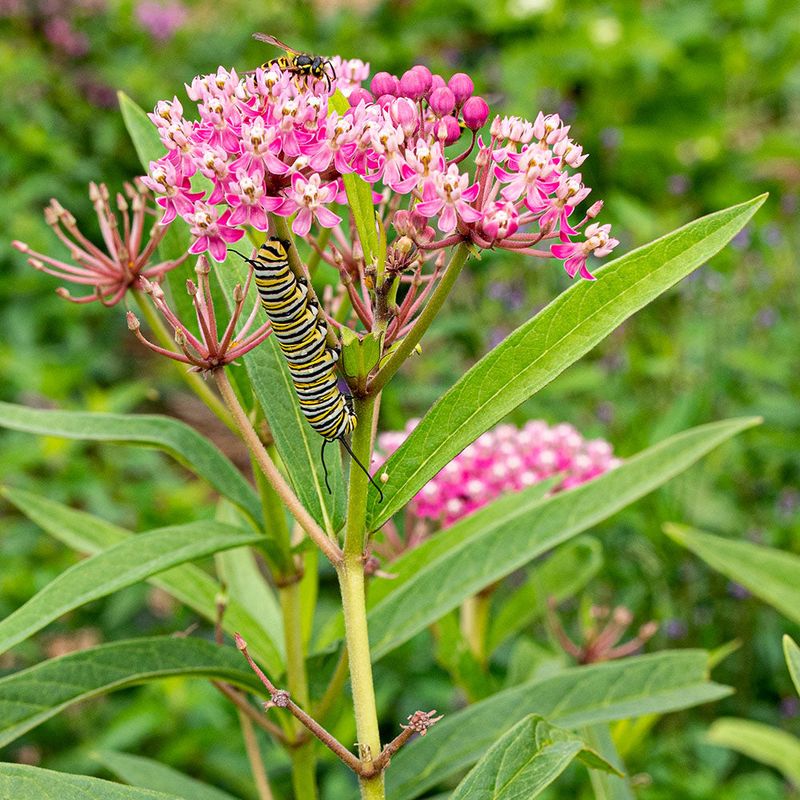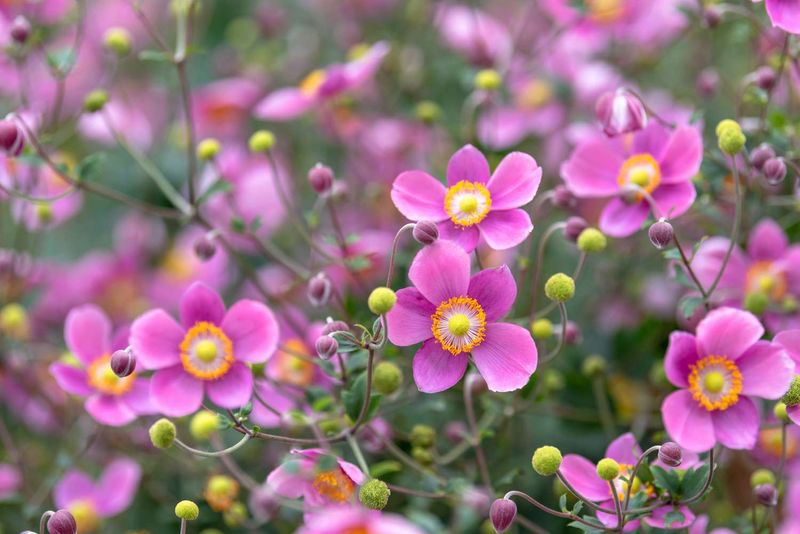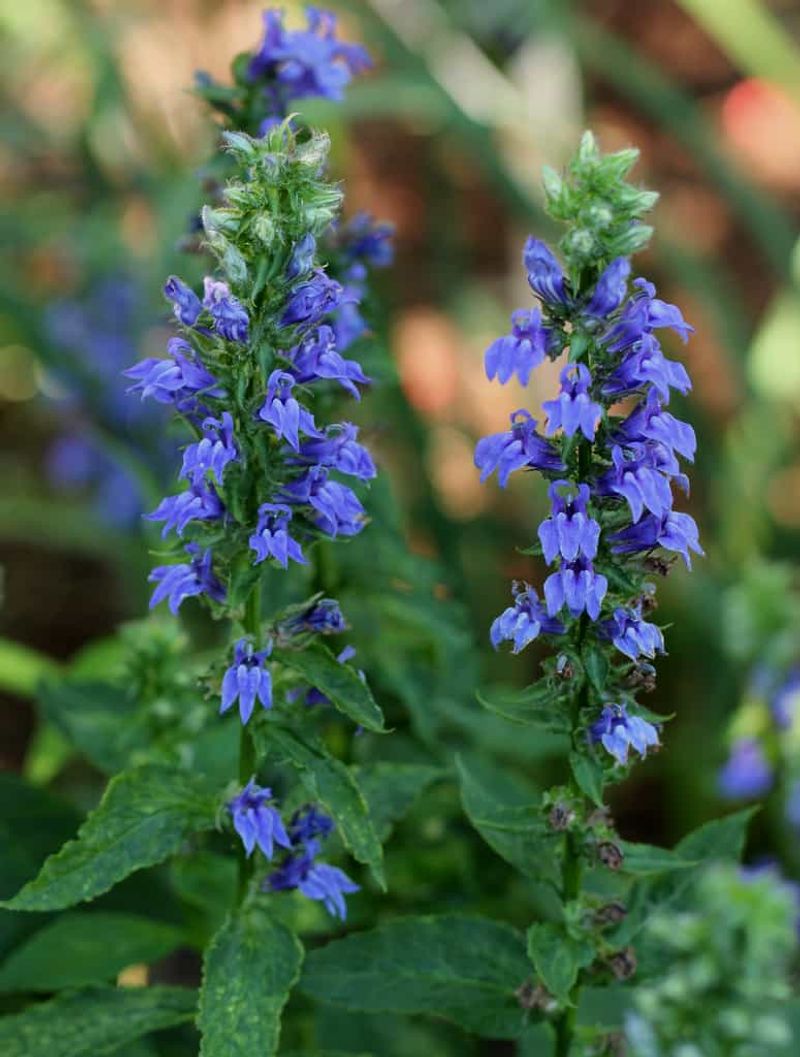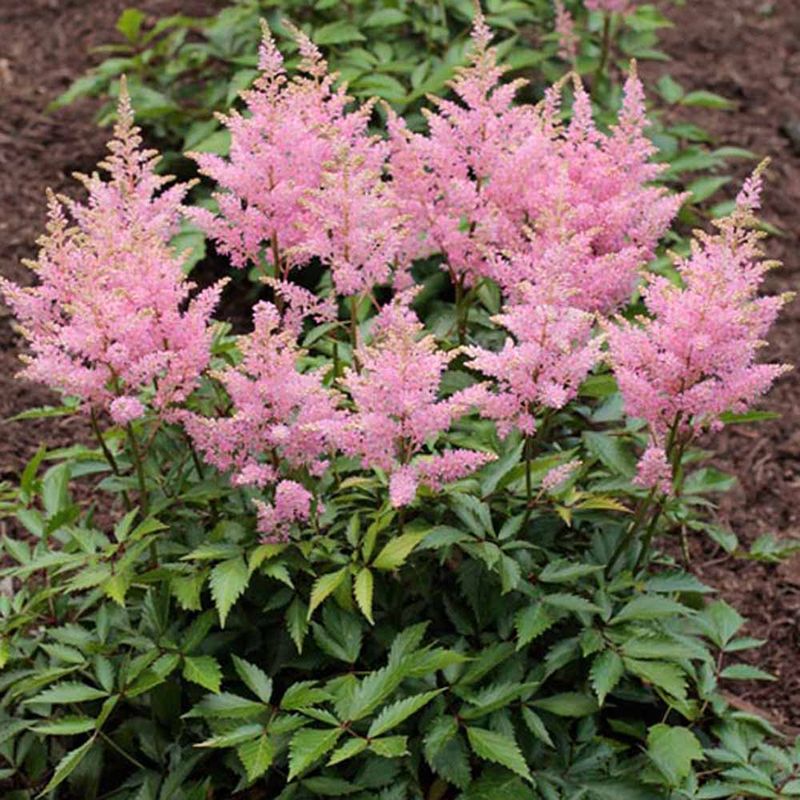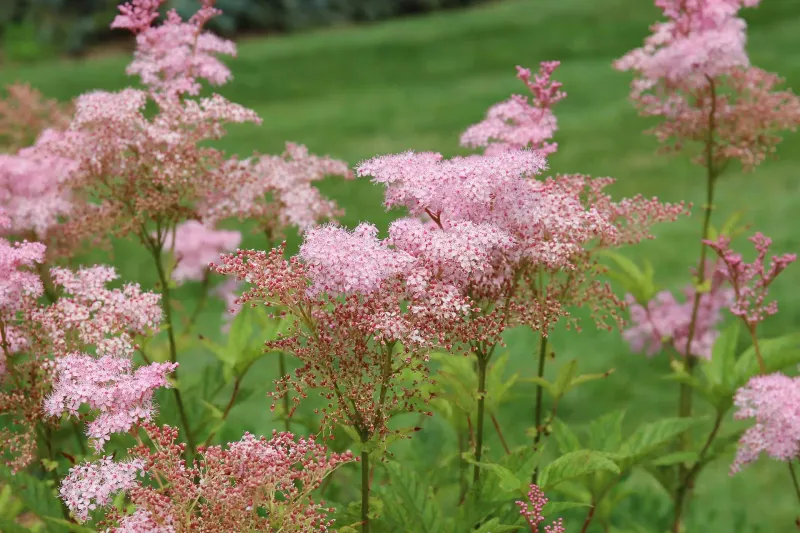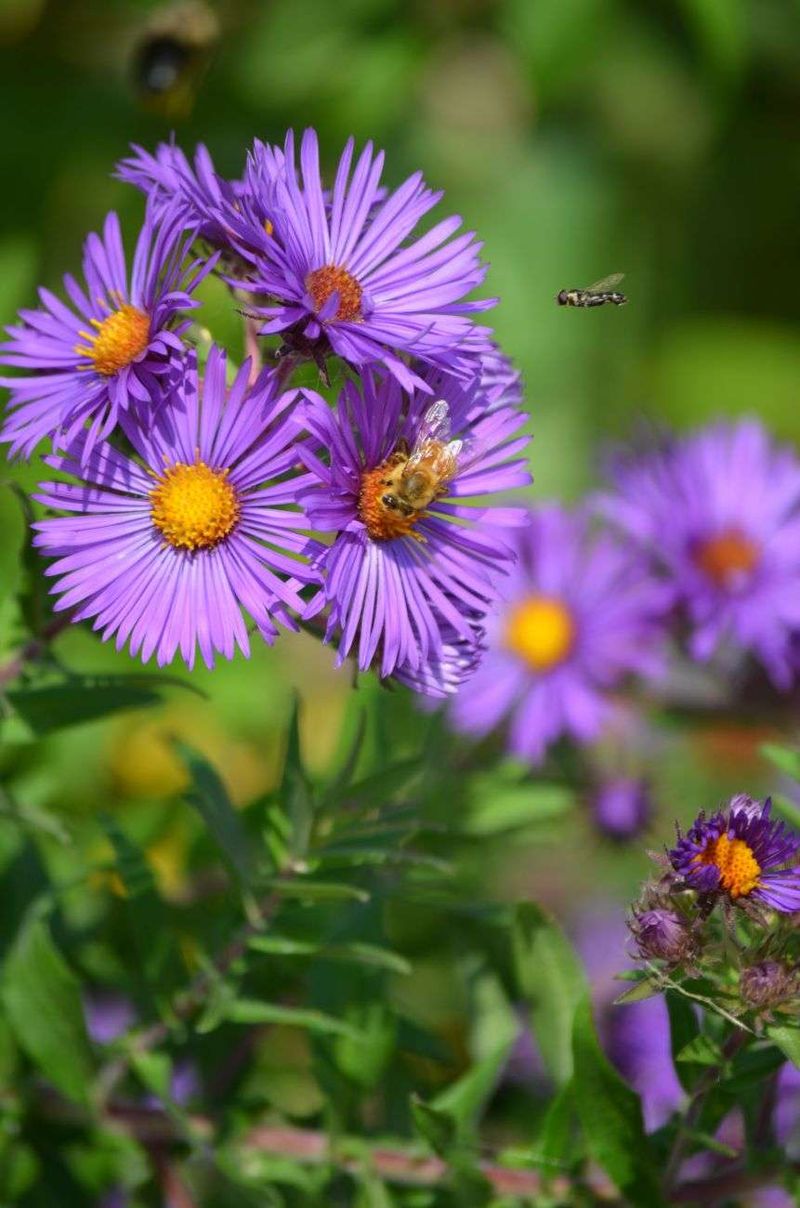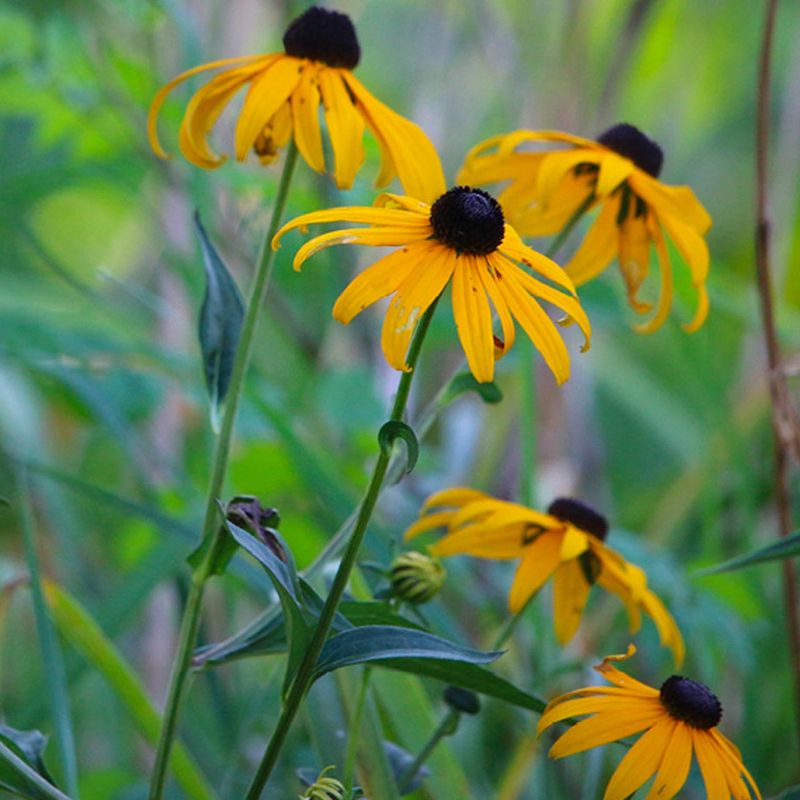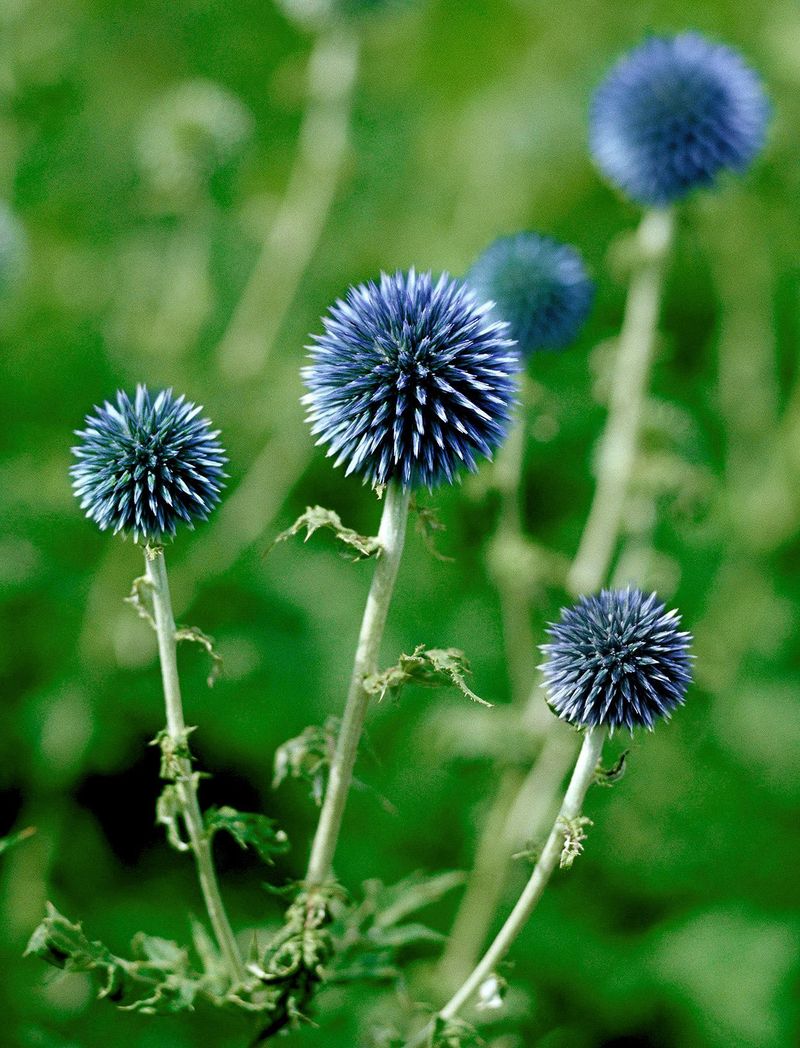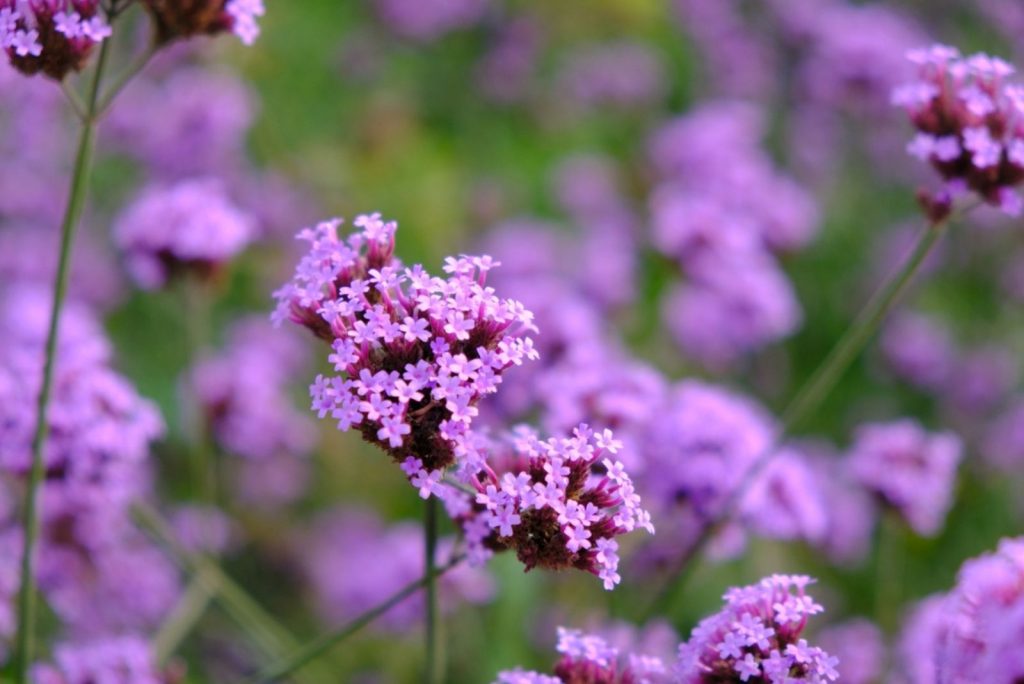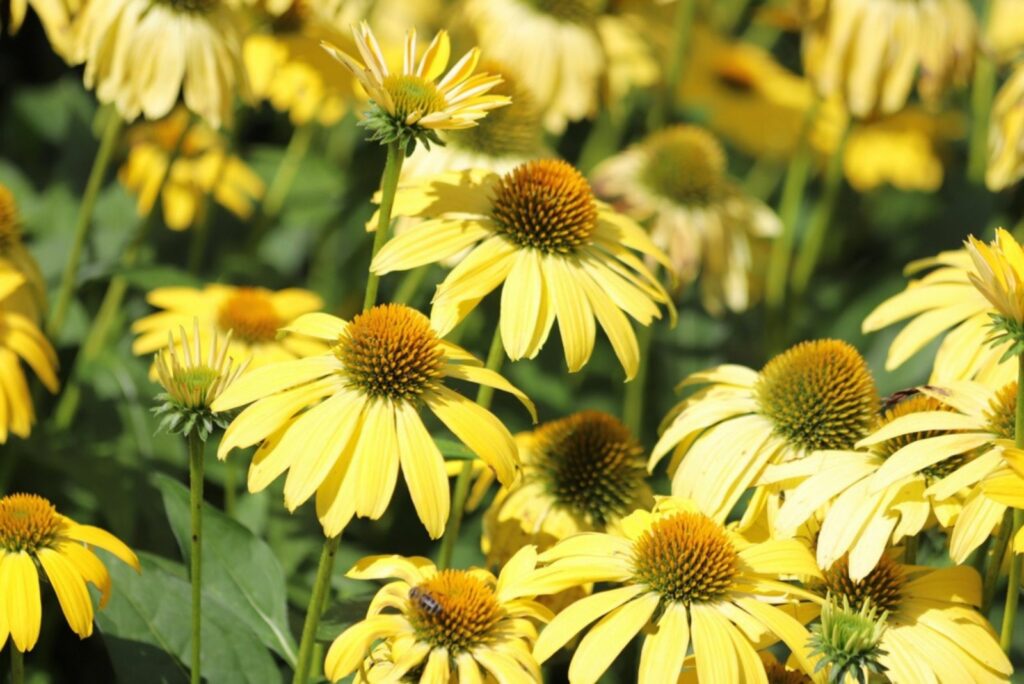Gardening is my therapy, and tall perennial flowers are like the unsung heroes of my backyard.
I remember when I first planted some towering beauties, thinking they’d be a nice touch, and little did I know, they’d completely transform my space!
Not only do they add impressive height and drama to your garden, but they also create a natural screen for privacy. It’s like having a secret garden retreat.
These flowers are the perfect mix of beauty and practicality. Kind of like a garden bouncer, but way more elegant! Ready to turn your garden into a private paradise?
1. Hollyhock
With their towering stems and clusters of colorful flowers, these beauties are a sight to behold. Hollyhocks, in shades of pink, red, and yellow, reach heights that create natural screens.
Their old-world charm will add a touch of nostalgia to your garden. Plant them along fences or walls to create an enchanting vertical accent.
Renowned for their resilience, they thrive well in sunny spots. Whether you’re a rookie gardener or a seasoned pro, hollyhocks are sure to impress.
2. Joe Pye Weed
Standing tall with a crown of pinkish-mauve flowers, this plant is a butterfly magnet. Joe Pye Weed’s towering presence in the garden offers a lovely contrast to shorter plants.
Its scent adds an aromatic touch to your garden. Historically, it was used by Native American tribes medicinally, adding a historical twist to your plant collection.
It does well in moist soils and can grow in partial shade, making it versatile for different garden settings.
3. Delphinium
These spikes of bliss bring a touch of elegance with shades of blue, white, and purple. Delphiniums are the aristocrats of the flower world, standing proudly and elegantly in any setting.
Perfect for cottage gardens, they’re a favorite among pollinators like bees. Plant them with support to prevent them from toppling over, especially in windy conditions.
Their demanding needs for rich soil and careful watering make them a gardener’s project worth undertaking.
4. Cardinal Flower
The first time I planted cardinal flowers near my pond, I didn’t realize just how much they’d become the stars of the garden.
Their striking red blooms practically dare you to look away, and before long, I had hummingbirds darting around like little acrobats. Watching them feed is pure entertainment!
I found that these flowers thrive best in the moist conditions near the water, which made perfect sense since my pond area was a natural fit. Cardinal flowers turned my garden into a lively haven.
5. Meadow Rue
Airy clusters of delicate flowers sway gently atop tall stems, creating a soft, ethereal effect. Meadow Rue is perfect for adding a light touch to your garden design.
Their lacy foliage is a contrast to bold plants, offering a nuanced texture. Ideal for partial shade, they grow best in well-drained soil.
If you’re looking to add a touch of gracefulness to your green space, meadow rue is an excellent choice.
6. Tansy
Clusters of yellow blooms amidst lacy foliage mark the distinct appearance of this plant. Tansy brings an old-fashioned charm to the garden, often reminiscent of cottage gardens.
Its aromatic leaves repel pests, making it a practical choice for eco-friendly gardening. Historically used for medicinal purposes, it adds a story-rich element to your flower collection.
Tansy prefers sunny locations and can withstand a variety of soil conditions, making it a robust addition to any garden.
7. Sneezeweed
Tall stems adorned with clusters of orange and yellow flowers add a sunny disposition to any garden. Sneezeweed is a cheerful plant that brings warmth and color late in the season.
Despite its name, it won’t make you sneeze but will delight with its blooms. It thrives in full sun and moist soil, perfect for brightening up those late summer days.
With its long-lasting displays, sneezeweed is a surefire way to keep your garden lively.
8. Culver’s Root
Long spikes of white flowers reach skywards, offering a serene and structured presence. Culver’s Root is known for its towering elegance and its ability to provide a vertical dimension.
As a native plant, it’s a great choice for naturalizing areas or wildflower gardens. It thrives in moist, well-drained soil and can tolerate partial shade.
If you’re looking to add a unique architectural plant that’s easy to grow, this one’s for you.
9. Gooseneck Loosestrife
Curved spikes of white flowers resembling a goose’s neck offer a playful touch to any garden setting. Gooseneck Loosestrife is a plant with personality, often becoming a talking point.
It’s great for borders and adds movement with its distinct arching blooms. Be cautious as it can spread vigorously, so it’s best planted in controlled areas.
Its tolerance for wet soil makes it ideal for rain gardens or areas with poor drainage.
10. False Indigo
I remember planting False Indigo a few years ago, and it quickly became one of my favorite plants. The blue spikes with their rich flowers are hard to miss, and every year, they seem to get more impressive.
One of the things I love most about this plant is how low-maintenance it is. After establishing itself, it thrives in dry conditions, which is a huge win for me since I tend to forget about watering sometimes.
Plus, those seed pods add a unique touch that keeps things interesting even after the blooms are gone.
11. Giant Hyssop
Purple flower spikes attract a host of pollinators, making this plant a lively feature in your garden. Giant Hyssop not only delights with its visual beauty but also with its aromatic leaves and flowers.
It’s a great plant for herb gardens, offering both ornamental and herbal uses. Thriving in full sun and well-drained soil, it’s a fuss-free addition.
If you want to add a splash of color and a hint of minty aroma, giant hyssop is your friend.
12. Russian Sage
Wispy stems adorned with lavender-blue flowers create a calming effect in any garden space. Russian Sage’s silvery foliage and airy structure brings a touch of elegance.
It’s incredibly drought-tolerant, making it ideal for xeriscaping or low-water gardens. Plant it in full sun for best results, and enjoy its long flowering season.
Its resilience and ease of care make it a fantastic choice for both novice and experienced gardeners.
13. Sunflower
Towering above most garden plants, these giants offer a cheerful greeting to anyone who passes by. Sunflowers are synonymous with summer and bring a smile with their sunny faces.
They’re not just beautiful but also provide seeds that attract birds, adding to your garden’s wildlife. Plant them in a sunny spot with plenty of space to grow.
With minimal care, sunflowers can reach impressive heights, becoming the star of your outdoor space.
14. Mullein
Velvety leaves and tall spikes of yellow flowers make this plant a unique addition to gardens. Mullein stands out with its distinct form and texture, often used in medicinal remedies.
It grows well in poor soil and full sun, showing its toughness in less-than-ideal conditions. If you’re looking to add an unusual plant with historical significance, mullein fits the bill.
It’s a conversation starter and a low-maintenance choice for any garden.
15. Ligularia
Large leaves and bright orange flowers offer a tropical vibe to shaded garden areas. Ligularia is perfect for gardens with lots of shade and moisture, adding an exotic touch.
It’s known for its preference for wet conditions, making it ideal for planting near ponds or streams. Its bold foliage contrasts well with other plants, adding visual interest.
This plant’s dramatic presence can transform a dull area into a striking focal point.
16. Tall Phlox
Clusters of fragrant flowers in shades of pink, purple, and white create a cottage garden dream. Tall Phlox is a classic favorite, known for its long blooming season.
It attracts butterflies and adds a splash of color wherever planted. For best results, plant in full sun and well-drained soil, ensuring good air circulation to prevent mildew.
With its delightful fragrance, it’s a must-have for any garden enthusiast looking to add a touch of romance.
17. Compass Plant
This prairie native is known for its towering height and sun-loving nature. The Compass Plant gets its name from the alignment of its leaves, which orient north-south.
Yellow flowers on tall stalks offer a bright display, perfect for naturalistic landscapes. It’s well-suited to sandy soils and full sun, thriving in open spaces.
If you’re aiming for a prairie-style garden, this plant is a fantastic addition, bringing both height and historical intrigue.
18. Ironweed
Ever wanted to add a bold, purple statement to your garden? Ironweed might be just the plant you need! With clusters of deep purple flowers that stand tall, it commands attention in any space.
I love how this plant attracts bees and butterflies, adding movement and life to my garden. It thrives in full sun and adapts well to different soil types, so no need to worry about the growing conditions.
Looking for an easy-to-grow plant with dramatic flair? Have you tried adding Ironweed to your garden yet?
19. Swamp Milkweed
Pink clusters of flowers atop tall stems attract a host of pollinators, making it a lively addition. Swamp Milkweed is not just pretty but crucial for monarch butterflies as a host plant.
It thrives in wet soils, making it perfect for rain gardens or pondsides. Its long blooming season ensures it shines throughout summer.
If you want to support wildlife while adding color, swamp milkweed is your plant.
20. Japanese Anemone
Late summer blooms grace the garden with their pink and white hues, offering elegance as the season changes.
Japanese anemones are known for their graceful presence and longevity in bloom. They thrive in partial shade with moist soil, making them perfect for woodland gardens.
Plant in groups for a stunning display of color. Their ability to naturalize and spread makes them an excellent choice for filling garden gaps.
21. Great Blue Lobelia
Imagine blue spikes piercing through your garden, adding a pop of color during summer. That’s the charm of Great Blue Lobelia.
Native to North America, this beauty flourishes in moist spots and invites hummingbirds with its tubular flowers.
Whether planted in rain gardens or beside streams, it brings ecological benefits and visual appeal. It thrives in both sun and partial shade, making it adaptable and easy to care for.
22. Chinese Astilbe
Feathery plumes of flowers create a soft, textured addition to shaded gardens. Chinese Astilbe is renowned for its elegant, airy blooms and attractive foliage.
It thrives in moist, shady areas, making it a go-to plant for woodland settings. Plant in groups for a dramatic effect, allowing its colors to pop.
Its low maintenance and deer-resistant nature make it a reliable choice for gardeners seeking beauty with ease.
23. Queen of the Prairie
Height and beauty combine in this plant, offering feathery pink blooms that stand out against green foliage. Queen of the Prairie is a statement plant, perfect for creating a focal point.
It’s happiest in full sun to partial shade with moist soil, thriving in meadows or gardens alike. Its fragrant flowers add a sweet aroma to your outdoor space.
24. New England Aster
Purple blooms with sunny centers brighten up gardens, especially in the fall. New England Aster is a late-season bloomer, offering color when most plants are winding down.
It attracts late pollinators, providing vital resources for bees and butterflies. Thriving in full sun and adaptable to various soil types, it’s a resilient garden addition.
For an autumnal display that keeps your garden buzzing, this aster is a fantastic option.
25. Rudbeckia
Every time I walk past my garden in full bloom, I can’t help but smile at the sight of my Black-eyed Susans. Their bright yellow petals with dark centers stand out so beautifully.
I’ve noticed bees and butterflies buzzing around them, drawn by their nectar. The best part? They’re incredibly low-maintenance! I simply water them regularly, and they return year after year.
If you’re looking for a cheerful, easy-to-care-for plant that loves the sun, Rudbeckia is a must-have for your garden!
26. Globe Thistle
Spherical blue flowers add an intriguing geometric element to garden designs. Globe Thistle is a hardy plant, known for its unique look and resilience.
It thrives in dry locations, making it perfect for xeriscaping. The spiky blooms deter deer and rabbits, adding to its appeal.
If you’re looking for a plant that stands out with minimal care, globe thistle is an excellent choice.
27. Verbena Bonariensis
Slender stems topped with clusters of tiny lavender flowers create a dreamy, see-through effect in the garden. Verbena Bonariensis is the quiet star that adds height without blocking views.
It attracts butterflies and bees like a magnet and blooms for months, adding life and movement to your space. Plant it in full sun and well-drained soil for best results.
Whether tucked among shorter plants or used as a gentle screen, it brings a light, airy elegance that’s hard to beat.
28. Yellow Coneflower (Ratibida pinnata)
Graceful drooping petals surround dark cone centers on tall stems, giving this native wildflower its signature look. Yellow Coneflower adds a burst of sunshine with a rustic charm.
It thrives in prairies and gardens alike, doing best in full sun and well-drained soil. Pollinators love it, and its deep roots make it drought-tolerant once established.
For a tall, carefree plant that sways beautifully in the breeze, this coneflower is a must for natural-style gardens.

